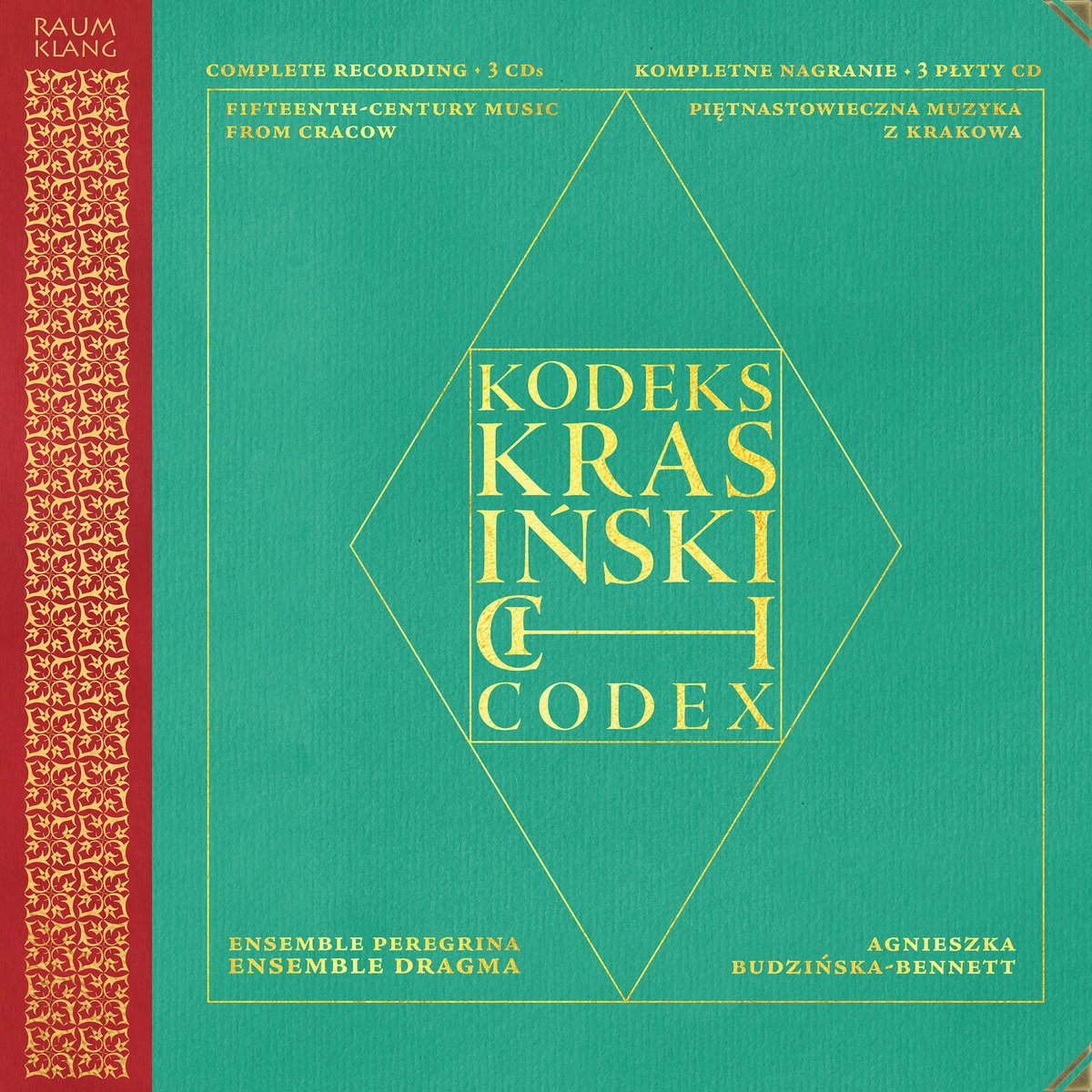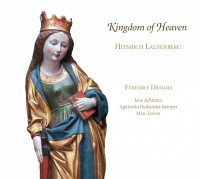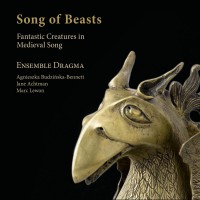Recordings
Dragma

Kras
The music on our triple album takes us back to royal Poland around the year 1426. Thanks to its international connections across Europe, the latest music from distant lands was performed with a wide variety of instruments and preserved for posterity in numerous manuscripts. One of these manuscripts is the Krasiński Codex (Manuscript 52 of the Krasiński Library, now held in the National Library of Poland in Warsaw, ms. III.8054) – the most important musical testament to this Polish and Lithuanian high culture, presented here for the first time as a complete recording.
The music on our triple album takes us back to royal Poland around the year 1426. At the heart of the realm lies Kraków, where the royal Jagiellonian dynasty rules from Wawel Castle. It is the golden age of the Polish-Lithuanian Union, uniting the Grand Duchy of Lithuania and the Kingdom of Poland into one of the most powerful states in Europe. Culture flourishes, and the arts are cultivated at the royal court. Thanks to international connections across the continent, the latest music from distant lands is performed with all manner of instruments and preserved for posterity in numerous manuscripts.
One such manuscript is the Krasiński Codex (Manuscript 52 of the Krasiński Library, today held in the National Library of Poland in Warsaw, ms. III.8054) – the most important musical document of this Polish and Lithuanian high culture. During the turmoil of World War II, the collections of the Warsaw Library were deliberately set ablaze, and a significant part of Poland’s cultural heritage went up in flames. The Krasiński Codex, however, had already been looted and taken to Germany, thus escaping destruction. After the war, the manuscript was discovered by chance in the Bavarian State Library in Munich and eventually returned to Poland. Today, it is one of the most treasured items in the Polish National Library and is stored in a fireproof vault.
The 15th-century manuscript contains a diverse repertoire of nearly 40 polyphonic pieces. A key focus of our recording lies on works by local composers such as Nicolaus de Radom (Mikołaj z Radomia), the first Polish composer known by name. In his works, he celebrates the “golden city” of Kraków and the powerful Jagiellonian dynasty. His sacred compositions also reflect some of the latest advances in compositional technique of his time. Alongside native compositions, we also present pieces that mirror the newest stylistic trends from distant Italy and France. These include enchanting Marian songs and Mass settings by Johannes Ciconia and Antonio Zachara da Teramo, works by the Parisian composer Estienne Grossin, and music by the enigmatic Magister Egardus.
To this day, the musical treasures contained in the Krasiński Codex have never been fully recorded, nor is the music widely accessible or internationally known. Our complete recording seeks to change that.
In addition, Agnieszka Budzińska-Bennett and Marc Lewon, in collaboration with Poland’s leading music publisher Polskie Wydawnictwo Muzyczne (PWM), have produced a complete bilingual (Polish | English) edition of the works in modern notation, accompanied by scholarly essays – a valuable resource to complement the music heard on this recording.
“[T]he short three-voice Salve thronus Trinitatis is performed first by male singers and later on harp and a gittern. The men bring a solid, tranquil power to this simple polyphony, but the second time around Marc Lewon executes the nattiest diminutions on the top line, whip-sharp and bracingly snappy. […] Lewon, Agnieszka Budzińska-Bennett and Grace Newcombe sing a play several instruments and they all excel. [… W]e glimpse the variegated polyphonic soundscape of a major 15th-century court at its cultural and historical peak. It’s early in the year, but this will surely be a contender for my Critic’s Choice in December.” (Fabrice Fitch)

Königreich des Himmels
Heinrich Laufenberg lived from about 1390 to 1460 in the Swiss region of Aargau, in Southern Germany and in Alsace. During is lifetime he composed a large body of songs and religious prose.
Artists: Jane Achtman (vielle, bells), Agnieszka Budzińska-Bennett (voice, harp, symphonia), Marc Lewon (voice, plectrum lute, vielle)
Guest Artists: Hanna Marti (voice, symphonia), Elizabeth Rumsey (vielle)
Most of his work was preserved for posterity in one specific manuscript in the Strasbourg library, which was destroyed in a fire in 1870. Luckily a partial transcript of this manuscript was made before the fire, so that some of Laufenbergs work has survived to this day.
Laufenbergs surviving songs are of great interest both musically and textually. In one song Laufenberg praises Mary mother of god in artful poetry, in a lullaby he ask Jesus to protect a sleeping babe, in a third song he describe heaven’s kingdom in colourful detail.
The program „Königreich des Himmels – the kingdom of heaven“ presents songs that have not been heard for the past 500 years. Laufenbergs lyric songs are framed by virtuosic instrumental music of is time. The program paints a detailed and colourful picture of the late medieval era, brought to life by the ensemble Dragma with authenticity, verve and sensuality.
Ord. no.: RAM 1402, total recording time: 77:31, published by Ramee

Song of Beasts
FANTASTIC CREATURES IN MEDIEVAL SONG
Ballate and Madrigali by Johannes Ciconia, Francesco Landini, Guillaume de Machaut, Jacopo da Bologna, Paolo da Firenze, Giovanni da Firenze, Donato da Firenze and others
Artists: Jane Achtman (vielle), Agnieszka Budzińska-Bennett (voice and harp), Marc Lewon (voice, medieval lute, vielle)
Medieval interest in animals and mythical creatures was not limited to the visual arts and literature. At the same time that bestiaries — manuscripts depicting animals and mythical creatures — were being compiled, composers were producing a wealth of pieces that portrayed these same beasts from a musical point of view. Song of Beasts combines medieval iconography with texts and music, immersing a modern audience in a fascinating world of verbal, visual and aural imagery. Ensemble Dragma presents a multifaceted, moving and profound depiction of these bestiaries that allows us a glimpse into the long-forgotten medieval mind. There are depictions of animals both mythical and real, including the panther, the viper, the phoenix and the basilisk. These pieces by well-known and less familiar composers are musical jewels, combining artful poetry with engaging melody.
Order no.: RAM 1901, CD and film, total recording time: 52:08, published by Ramee
You are currently viewing a placeholder content from YouTube. To access the actual content, click the button below. Please note that doing so will share data with third-party providers.
More Information